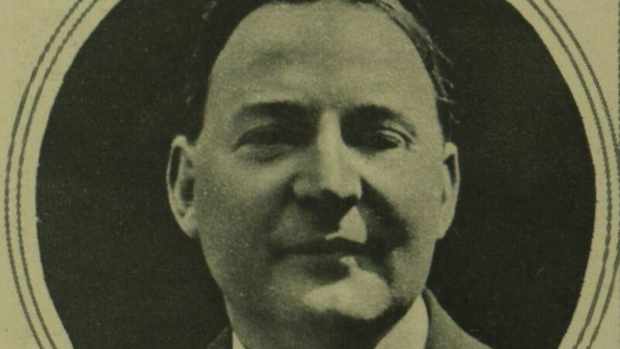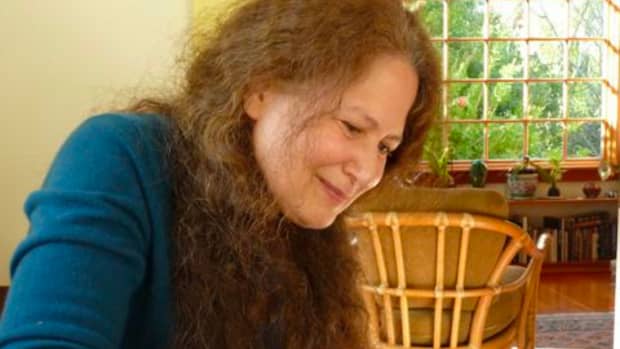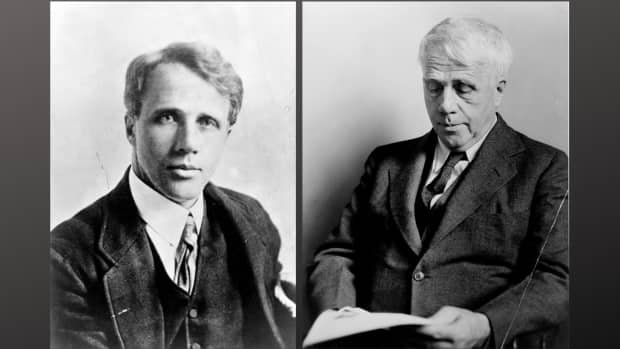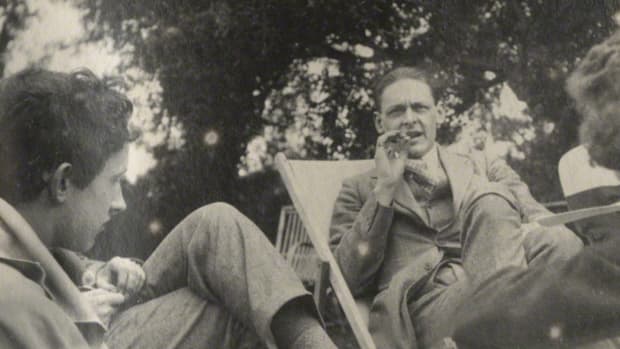Free Samples and Examples of Essays, Homeworks and any Papers
- Absolutely free
- Perfect homeworks
- Fast relevant search
- No registration and Anonymous

My Mother's Blue Bowl – Literary Criticism
Filed Under: Essays Tagged With: criticism
In the short story, “My Mother’s Blue Bowl” by Alice Walker, Alice’s mother is the archetypal earth mother surrounded by the materialistic external world. The mother, Mama Walker, shows her unconditional love for her children despite their challenging socio-economic state. She considers her possessions to be worth nothing to her as she lets go so “easily, without emphasis or regret” (Walker 253).
One example of this is after moving to the projects after her children finished college, Mama Walker adjusted even though she had longed for a nice house earlier in life. Despite poverty and ever present racism, the family endures with dignity. “My Mother’s Blue Bowl” shows the power of nature over a materialistic world. Mama Walker has little value for materialistic possessions as shown through her recycling and eliminating them.
The symbolic colours typical of earth mother archetypes in the story represent hope and renewal. Their poor apartment is full of life despite their lack of money and social prejudice. Mama Walker accomplishes this through her love for nature by “her flowers: everywhere, inside the house and outside. [Planting them] in anything she [manages] to get her green hands on, including old suitcases and abandoned shoes. She [recycles] everything, effortlessly” (Walker 252).
Through the symbols of light versus darkness, Alice Walker describes a house her mother had found when Alice was thirteen – one with “[green-shuttering], [white-walls]. Breezy. With a lawn and a hedge and giant pecan trees.” (Walker 252), suggesting that they had found hope and a sense of renewal in their lives through nature. Mama Walker is not moved by the changes in her life after Alice had left. She knows that materialistic possessions are not important as she brings beauty into anything she touches.
The Homework on Turn To Our Mother One Society Life
A mother is like a flower that grows before the eyes of her kids. I never knew how much my mother meant to me until I became an adult. In today's society the younger generation fail to understand the importance of having their mother in their lives. It seems like they forgot who carried them for nine months, clothed, and fed them. Most children thought that they were wiser than their mother. In ...
Despite the Jim Crow Laws they lived in and the family’s lack of money, Mama Walker remains faithful to her simple natural way of life. To her, freeing her from material possessions is “a step in the direction of divestiture, lightening her load, permitting her worldly possessions to dwindle in significance…” (Walker 252).
It does not matter to her to have so little because those possessions have no value to her. Instead, she favours the natural environment around her house by planting flowers in old suitcases and discarded shoes, and having paintings of flowers and fruits. In this way, Mama Walker transforms material possessions and makes them beautiful. She brings beauty and warmth into the home and these qualities make her glow in the eyes of Alice Walker.
The blue bowl that Mama Walker gives to Alice may not mean anything to the mother but to Alice “she had given [her] a symbol of what [her mother] herself [represents] in [her] life” (Walker 253).
Through the blue bowl in the story, this symbol makes Alice Walker realize that her mother’s love of nature and ability to bring warmth and light in other people’s lives makes her an archetypal earth mother.
Similar Papers
Walker everyday use mama and maggie.
... her personal life and incorporates his or her past into the short story. Alice Walker is ... the hand-made items her mother uses around the house; such as the churn top, ... and will never possess. Contrasting through Mama and Maggie, Dee seeks her heritage ...
Movie Analysis For Life As A House
... have any solid guidance in his life. His mother is ready to give up on ... brighter future. Reference Winkler, I. (2001). Life as a house [Motion picture]. United States: New ... anyone else. Covered in piercings and sporting blue dye in his hair, Sam seems ...
Life Experiences Are What Makes A Persons Personality
... the house anyway scotch Booze and pills, that would do it." (524) With Dominicks past and present combined, his life makes ... display emotion. Dominick and Thomas were loved by their mother but because of her unpleasant childhood, she had insecurities ...
Life As A House
... movie, feeling what the characters feel. This film Life as a House really did enhance my understanding of changing perspective ... and captivating movie which immediately helps the responders to make a bond with the characters. Throughout this story we ...
LIFE IS WHAT YOU MAKE OF IT
... a condition of wisdom; Tennyson calls it ‘mother of all virtues'. A wise man is the ... have we totally lost focus in our lives? A life that solely revolves around the motto of ... to a successful life.Life is what you make of it. While we stay ensconced in ...
Alice Hindman Enoch Life Loneliness
... character. As Enoch grew up in Winesburg, his mother's house lay dark because all the window blinds were ... Alice's friends didn't understand Alice and Enoch's wife and art friends didn't understand them. This caused them to make their own lives ...
Sunday, September 13, 2015
In "my mother's blue bowl" by alice walker, what is the general tone of the text.
In the text, the tone is both introspective and nostalgic. In literature, tone d the author's attitude towards his/her subject or central theme. The main theme of this story is the precious legacy a mother leaves her daughter.
In reminiscing about her mother, the author is grateful for the legacy of powerful values that is her birthright. The blue bowl is an important symbol in the story; it is a testament to one woman's warmth,...
In reminiscing about her mother, the author is grateful for the legacy of powerful values that is her birthright. The blue bowl is an important symbol in the story; it is a testament to one woman's warmth, love, and generosity towards her family.
The blue bowl stood there, seemingly full forever, no matter how deeply or rapaciously we dipped, as if it had no bottom. And she dipped up soup. Dipped up lima beans. Dipped up stew. Forked out potatoes. Spooned out rice and peas and corn. And in the light and warmth that was her, we dined.
The author remembers that, even though her family was poor, the blue bowl always symbolized security and abundance. In life, her mother's material needs had been few; in fact, her main focus 'in her last healthy days' was to aim towards 'divestiture, lightening her load, permitting her worldly possessions to dwindle in significance and, well before she herself would turn to spirit...' However, the author recalls that the ease with which her mother had bequeathed her the bowl had been symbolic.
She had taught me a lesson about letting go of possessions—easily, without emphasis or regret—and she had given me a symbol of what she herself represented in my life.
In one of her last actions on earth, the mother has bequeathed both abundant love and hope as lasting gifts to her daughter.
No comments:
Post a comment, is charlotte bronte's jane eyre a feminist novel.
Feminism advocates that social, political, and all other rights should be equal between men and women. Bronte's Jane Eyre discusses many...
- What are some quotes about family from The Outsiders? Pony comments that his gang members are like family. This is because they are all very close since they have to depend on each other for ev...
- Discuss humor and pathos in Lamb's "The Superannuated Man." In "The Superannuated Man" Elia, Lamb's alter-ego, discusses his retirement after 36 years of work in a business, a situation ...
- Who is the intended audience of "Dulce et Decorum Est"? Interestingly, the intended audience for Wilfred Owen's graphic war poem "Dulce et Decorum Est" is other poets, specifically o...

My Mother’s Blue Bowl – Part 2
You May Also Be Interested In

Alice Walker on Obama’s Victory – 5 Nov 08 – Part 2

Alice Walker in Gaza, Part 1 of 3

Alice Walker reading “You Confide in Me”
"My Mother's Blue Bowl" typescript draft
- HOW TO REQUEST
Scope and Content Note
The subseries contains typescripts and manuscripts of Alice Walker's non-fiction works including collected and uncollected essays, reviews of fiction and poetry, introductions and forewords to published prose, letters to the editor, interviews, college papers and speeches from 1961-2012. Of particular interest to researchers will be the multiple drafts of Walker's essays "One Child of One's Own" and "Looking for Zora," her important tribute to Zora Neale Hurston. Among her edited volumes is a collection of letters between Walker and Bessie Head, South African feminist activist, and typescript drafts of the book Warrior Marks , adapted from the film of the same title. Of particular interest among the introductions is Walker's introduction to J. California Cooper's A Piece of Mine , published in 1984 by Wild Trees Press, of which Walker was co-owner. Among the college papers is a draft of Walker's senior thesis on Albert Camus. This series also includes Walker's 1986 calendar, a typescript of Walker's contribution to a book written with a Korean friend, and book-length invitation to her friends and colleagues to come visit her houses.
- From the Sub-Series: 1966-2006
Language of Materials
Materials mostly in English.
Restrictions on Access
Access to born digital materials is only available in the Stuart A. Rose Manuscript, Archives, and Rare Book Library (the Rose Library).
From the Collection: 138 linear feet (253 boxes); 9 oversized papers boxes and 1 oversized papers folder (OP); 10 bound volumes (BV); 5 oversized bound volumes (OBV); 2 extraoversized papers folders (XOP); 2 framed items (FR); AV Masters: 5.5 linear feet (6 boxes and CLP); 7.2 GB of born digital materials (3,054 files)
Physical Storage Information
- Box: 80, Folder: 10 (Mixed Materials)

Repository Details
Part of the Stuart A. Rose Manuscript, Archives, and Rare Book Library Repository
Collection organization
"My Mother's Blue Bowl" typescript draft, Subseries 2.4a, Box: 80, Folder: 10. Alice Walker papers, Manuscript Collection No. 1061. Stuart A. Rose Manuscript, Archives, and Rare Book Library.
Cite Item Description
"My Mother's Blue Bowl" typescript draft, Subseries 2.4a, Box: 80, Folder: 10. Alice Walker papers, Manuscript Collection No. 1061. Stuart A. Rose Manuscript, Archives, and Rare Book Library. https://archives.libraries.emory.edu/repositories/7/archival_objects/38820 Accessed June 09, 2024.

We use cookies to give you the best experience possible. By continuing we’ll assume you’re on board with our cookie policy
My Mother’s Blue Bowl – Literary Criticism

- Word count: 493
- Category: Criticism Mother My Mother
A limited time offer! Get a custom sample essay written according to your requirements urgent 3h delivery guaranteed
In the short story, “My Mother’s Blue Bowl” by Alice Walker, Alice’s mother is the archetypal earth mother surrounded by the materialistic external world. The mother, Mama Walker, shows her unconditional love for her children despite their challenging socio-economic state. She considers her possessions to be worth nothing to her as she lets go so “easily, without emphasis or regret” (Walker 253). One example of this is after moving to the projects after her children finished college, Mama Walker adjusted even though she had longed for a nice house earlier in life. Despite poverty and ever present racism, the family endures with dignity. “My Mother’s Blue Bowl” shows the power of nature over a materialistic world. Mama Walker has little value for materialistic possessions as shown through her recycling and eliminating them.
The symbolic colours typical of earth mother archetypes in the story represent hope and renewal. Their poor apartment is full of life despite their lack of money and social prejudice. Mama Walker accomplishes this through her love for nature by “her flowers: everywhere, inside the house and outside. [Planting them] in anything she [manages] to get her green hands on, including old suitcases and abandoned shoes. She [recycles] everything, effortlessly” (Walker 252). Through the symbols of light versus darkness, Alice Walker describes a house her mother had found when Alice was thirteen – one with “[green-shuttering], [white-walls]. Breezy. With a lawn and a hedge and giant pecan trees.” (Walker 252), suggesting that they had found hope and a sense of renewal in their lives through nature. Mama Walker is not moved by the changes in her life after Alice had left. She knows that materialistic possessions are not important as she brings beauty into anything she touches.
Despite the Jim Crow Laws they lived in and the family’s lack of money, Mama Walker remains faithful to her simple natural way of life. To her, freeing her from material possessions is “a step in the direction of divestiture, lightening her load, permitting her worldly possessions to dwindle in significance…” (Walker 252). It does not matter to her to have so little because those possessions have no value to her. Instead, she favours the natural environment around her house by planting flowers in old suitcases and discarded shoes, and having paintings of flowers and fruits. In this way, Mama Walker transforms material possessions and makes them beautiful. She brings beauty and warmth into the home and these qualities make her glow in the eyes of Alice Walker.
The blue bowl that Mama Walker gives to Alice may not mean anything to the mother but to Alice “she had given [her] a symbol of what [her mother] herself [represents] in [her] life” (Walker 253). Through the blue bowl in the story, this symbol makes Alice Walker realize that her mother’s love of nature and ability to bring warmth and light in other people’s lives makes her an archetypal earth mother.
Related Topics
We can write a custom essay
According to Your Specific Requirements

Sorry, but copying text is forbidden on this website. If you need this or any other sample, we can send it to you via email.
Copying is only available for logged-in users
If you need this sample for free, we can send it to you via email
By clicking "SEND", you agree to our terms of service and privacy policy . We'll occasionally send you account related and promo emails.
We have received your request for getting a sample. Please choose the access option you need:
With a 24-hour delay (you will have to wait for 24 hours) due to heavy workload and high demand - for free
Choose an optimal rate and be sure to get the unlimited number of samples immediately without having to wait in the waiting list
3 Hours Waiting For Unregistered user
Using our plagiarism checker for free you will receive the requested result within 3 hours directly to your email
Jump the queue with a membership plan, get unlimited samples and plagiarism results – immediately!
We have received your request for getting a sample
Only the users having paid subscription get the unlimited number of samples immediately.
How about getting this access immediately?
Or if you need this sample for free, we can send it to you via email.
Your membership has been canceled.
Your Answer Is Very Helpful For Us Thank You A Lot!

Emma Taylor
Hi there! Would you like to get such a paper? How about getting a customized one?
Get access to our huge, continuously updated knowledge base
The Metaphysical Value of Material Possessions: A Sentimental
- Social Sciences
Analysis of the Poem 'The Blue Bowl' by Jane Kenyon
- Author: Andrew Spacey

Jane Kenyon
'The Blue Bowl' Poem Analysis
'The Blue Bowl' focuses on the burial of a cat and is a touching poem that gives the reader a sensitive, detailed snapshot of family life.
Burying a beloved member of the family is always difficult and the speaker in this poem is no exception. The world is changed by such a loss, or rather the emotional world we inhabit is never quite the same again.
This is the poem's theme – the contrast between the interior and the exterior, the emotional world, and objective reality. When an animal that humans love dies, there is always a vacuum left to fill, and a sense of closure isn't easy to attain.
Battling Depression Through Poetry
Jane Kenyon had an ongoing battle with depression for most of her adult life. Poetry helped her put things into perspective, although she often was modest about her achievements or didn't think she wrote well:
'I can't write a line that doesn't sound like pots and pans falling out of the cupboard.'
Domesticity, life on a rural farm, suffering, and tranquil moments all feature strongly in her work, which is mostly written in a calm, natural and straightforward manner.
Her most famous poem was inspired by the Russian poet Anna Akhmatova, who she translated, and is called 'Having it out with Melancholy', a nine-part poem dealing with the subject of depression and drugs.
'The Blue Bowl' was first published in Poetry Magazine in 1987 and appeared in the book Otherwise: New and Selected Poems , 1996.
Always keen to help other writers and a lover of nature, her empathy towards those in need of healing seems clear:
'We have the consolation of beauty, of one soul extending to another soul and saying, I've been here too.'
'The Blue Bowl'
Like primitives we buried the cat with his bowl. Bare-handed we scraped sand and gravel back into the hole. It fell with a hiss and thud on his side, on his long red fur, the white feathers that grew between his toes, and his long, not to say aquiline, nose. We stood and brushed each other off. There are sorrows much keener than these. Silent the rest of the day, we worked, ate, stared, and slept. It stormed all night; now it clears, and a robin burbles from a dripping bush like the neighbor who means well but always says the wrong thing.
Recommended

Wellington House: Britain's WW1 Propaganda Bureau
Meaning and analysis of the poem.
'The Blue Bowl' is a free verse poem of 16 lines, a single stanza. It has no set rhyme scheme or regular consistent meter (metre in British English).
The tone is hushed, subdued, down to earth but it also suggests an undercurrent of fateful unease. There is an acceptance that somewhere along the line in life things will disappear; there will be loss, but also a need to put these losses into perspective.
Reading through this short poem, which begins and ends with a simile:
- Like primitives (because they've used their hands because they're country folk)
- Like the neighbor (an actual neighbor or a fictional type who always misunderstands a situation)
The reader is taken into a sad world, one that is both innocent and experienced enough to know that sadness comes in degrees. Losing a pet cat is awful, but there are far worse things happening to animals and people out in the world.
- The fact that the cat is buried with a bowl is significant. Just what sort of bowl it is we're not told, but it could be a food bowl, a symbol of love and nourishment, and something the cat could take with it as it makes the journey to wherever it's going.
Rhyme Scheme
Not the internal rhyme of bowl/hole and toes/nose and hiss/his as the poem progresses, binding lines and meaning. And some alliteration brings texture to the sound – scraped sand ... fur, the white feathers ... than these.
Interpreting Nature's Role in the Speaker's Grief
The detail described as the cat lies in the ground and the sand and gravel are scraped back in, which is revealing and intimate. Though there is no name for this animal, he must have been loved – perhaps he was a working cat, who had to earn his keep.
Nature is very much in evidence after the burial. A storm comes and goes, and a robin is noticed the next day, singing. Such a natural thing to happen ... but the speaker cannot yet take it in for what it is, an expression of beauty, an outburst of communication.
The speaker seems to imply that the robin's song is an irritant; it doesn't quite fit in with the speaker's emotional world. This last line shows that the burial of the cat has upset the family emotionally, as expected, and that even a simple robin's song cannot bring happiness or joy yet.
It's difficult to know what to do with a neighbor who is always saying the wrong thing. They cannot help it, but it means that the recipient has to adjust their head and heart, and sometimes that is a challenge.
© 2018 Andrew Spacey

Jane Kenyon's "The Blue Bowl"

Poem Analysis: 'Waking in the Blue' by Robert Lowell

Analysis of Poem 'My Skeleton' by Jane Hirshfield

Analysis of Poem 'Home Burial' by Robert Frost

Analysis of the Poem 'The Waste Land' by T.S. Eliot

An Analysis of the Poem "The Layers" by Stanley Kunitz

IMAGES
VIDEO
COMMENTS
Walker describes the blue bowl as a "cauldron of memories." The bowl's function is to represent the meaning that people often attach to objects and how that meaning can shape an object's value.
In "My Mother's Blue Bowl," Alice Walker describes a bowl which is of tremendous importance to her. Explain the significance of an important object or person in your own or your family's life. e—you may go forward or back to any section of this booklet during the test process. —+ 5 marks 108 English Language Arts: Process Booklet (June 2014)
The big blue bowl represents the mother, how loving and caring she is, no matter what is thrown at her and how much hard work she has to go through to make her family happy she is willing to go to great lengths to do so. The fact that the bowl never empties represents the mother's endless love for her family. 2. Colloquialism.
In the short story, "My Mother's Blue Bowl" by Alice Walker, Alice's mother is the archetypal earth mother surrounded by the materialistic external world. The mother, Mama Walker, shows her unconditional love for her children despite their challenging socio-economic state. She considers her possessions to be worth nothing to her as she ...
Symbolism In Alice Walker's Essay 'My Mother Blue Bowl'. 391 Words2 Pages. Writers and poets often spread deep meaning in ordinary things: bowl can represent our parents' heritage, food can represent our relationships with people and chocolate bar can be a symbol of childhood or green tea can be a symbol of love.
The blue bowl stood there, seemingly full forever, no matter how deeply or rapaciously we dipped, as if it had no bottom. And she dipped up soup. Dipped up lima beans. Dipped up stew. Forked out potatoes. Spooned out rice and peas and corn. And in the light and warmth that was her, we dined. Thank you, Mama.
Essays and criticism on Alice Walker - Walker, Alice (Vol. 5) Select an area of the website to search ... In "My Mother's Blue Bowl" by Alice Walker, what is the general tone?
Filed Under: Essays Tagged With: criticism. 1 page, 489 words. In the short story, "My Mother's Blue Bowl" by Alice Walker, Alice's mother is the archetypal earth mother surrounded by the materialistic external world. The mother, Mama Walker, shows her unconditional love for her children despite their challenging socio-economic state.
Ms. Rasciauskas ENG 4U1 March 20, 2019 My Mother's Blue Bowl The essay "My Mother's Blue Bowl" by Alice Walker very effectively narrates a story of the gift of the blue bowl and her mother's lesson and symbolism behind it. Quite frequently, a simple story can sound like a schedule of events listed off if written poorly. Walker combines a narration and description essay structure to ...
The Audience Unity Clarity It is created by: Illustration/Example Comparison/Contrast Include necessary, exclude unnecessary both purpose of writing and intended audience must be clear Figurative language Simile, metaphor Selecting details to create a single dominant impression
The short story My Mother's Blue Bowl written by Alice Walker left readers with heartwarming, memorable and unforgettable impressions. To begin with, the initial feeling left behind is a gratifying heartwarming thought. The mother displays the great lengths an individual would go to protect and give her children the best experience of life.
tone d the author's attitude towards his/her subject or central theme. The main theme of this story is the precious legacy a mother leaves her daughter. In reminiscing about her mother, the author is grateful for the legacy of powerful values that is her birthright. The blue bowl is an important symbol in the story; it is a testament to one ...
Alice Walker 's short prose sketch "My Mother's Blue Bowl" and Teresa Palomo Acosta's poem "My Mother Pieced Quilts" both address their authors' mothers and the legacies they left their daughters ...
TAKING THE ARROW OUT OF THE HEART. Now Is the Time to Open Your Heart: A Novel. Possessing the Secret of Joy. We Are the Ones We Have Been Waiting For, THE Temple of My Familiar. You Can't Keep A Good Woman Down. By the Light of My Father's Smile. Overcoming Speechlessness.
a large kettle or boiler. divestiture (divest) to disencumber or rid of something unwanted. flourished (flourish) to grow vigorously; succeed; thrive; prosper. frigidity (frigid) extremely cold. itinerant. traveling from place to place or on a circuit.
"My Mother's Blue Bowl" typescript draft Scope and Content Note. From the Sub-Series: The subseries contains typescripts and manuscripts of Alice Walker's non-fiction works including collected and uncollected essays, reviews of fiction and poetry, introductions and forewords to published prose, letters to the editor, interviews, college papers ...
In the short story, "My Mother's Blue Bowl" by Alice Walker, Alice's mother is the archetypal earth mother surrounded by the materialistic external world. The mother, Mama Walker, shows her unconditional love for her children despite their challenging socio-economic state. She considers her possessions to be worth nothing to her as she ...
English document from John Polanyi Collegiate Institute, 9 pages, Essay * Essay * Analysis * * * * "My Mother's Blue Bowl" by Alice Walker By: Caitlin, Ellena, Angel, & Samantha * * * * * * Thesis (Caitlin) The thesis explored in the article is with regards to how how material possessions should not be valued because o
The Color Purple and Gender Roles. by Michael Stultz, M.A. Alice Walker Lesson Plans and Activities. eNotes Lesson Plans are written, tested, and approved by teachers.
Oct 24, 2023 5:21 PM EDT. Jane Kenyon. 'The Blue Bowl' Poem Analysis. 'The Blue Bowl' focuses on the burial of a cat and is a touching poem that gives the reader a sensitive, detailed snapshot of family life. Burying a beloved member of the family is always difficult and the speaker in this poem is no exception.
Summarize "My Mother's Blue Bowl" by Alice Walker. Ask Prospero! Get an answer instantly from Prospero, our cutting-edge AI trained on our vast collection of literary and educational content.